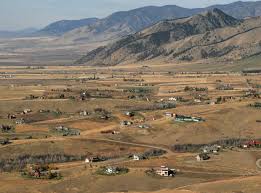
The Montana Supreme Court recently issued its decision in the long fraught dispute about exempt groundwater wells. The ruling by the Montana Supreme Court in The Clark Fork Coalition v. Tubbs, will protect the rights of senior water users from exempt groundwater wells that often deplete the amount of available surface water.[1]
The Montana Water Use Act exempts certain groundwater appropriations from the state’s permitting process if the groundwater appropriation pumps below a certain threshold and is applied to a limited area. This type of exemption is common in water use acts in other states, including Oregon and Nevada. However, Montana’s Water Use Act has an exception to the exemption, which requires a permit for any “combined appropriation” from the same source by multiple wells that exceeds 10 acre-feet per year.[2]
In 1993 the Montana Department of Natural Resources and Conservation (“DNRC”) amended its 1987 administrative rule, interpreting the term “combined appropriation” within the Water Use Act’s exception to the exemption. The DNRC’s 1993 rule (the rule in effect through the deciding of this case) stated “combined appropriation” means “groundwater developments, that are physically manifold into the same system.”[3] In application, this rule allowed groundwater wells to be drilled and as long as the appropriator did not connect the wells, even though the wells drew water from the same source, the appropriator could avoid obtaining permits for the wells and could end up appropriating a limitless amount of water from the same source.
The Montana Supreme Court determined the DNRC’s rule interpreting the term “combined appropriation” in the Montana Water Use Act improperly allowed these infinite withdrawals from the same source. The Montana Supreme Court recognized that the purpose of the Montana Water Use Act is to protect senior water right users from appropriation by junior water right users when there is not enough water physically available. Therefore, the Montana Supreme Court invalidated the 1993 rule and determined the DNRC must issue a new rule reflecting the need to recognize the effect that multiple wells drawing from the same source have on other water appropriators.
Many states, like Montana, have exemptions that allow groundwater wells to be drilled for specific purposes without going through any sort of permitting process to determine if the well will have an effect on water availability in the region. Additionally, many states, Nevada being one, continue to manage groundwater and surface water as two separate systems, rather than through conjunctive management. The failure to recognize the interconnectedness of groundwater and surface water and the cumulative effect of exempt wells on water availability in a region leads to over appropriation and fails to protect senior appropriators.
Conjunctive management is continuing to gain more traction; however, there is still much discussion about how states can implement this new management approach. Schroeder Law Offices Shareholder Therese Ure will be adding her voice to the conversation at the International Commission on Irrigation and Drainage’s World Irrigation Forum in Thailand, November 6th – 12th. Attorney Ure’s paper that was accepted for the Forum discusses Nevada’s failure to conjunctively manage its groundwater and surface water systems, including the effects of mine dewatering in such a disjunctive system and suggestions for creating a “dynamic” system of water management.
Make sure to stay tuned to Schroeder Law Offices’ Water Blog for more news about the upcoming World Irrigation Forum!
[1] The Clark Fork Coalition v. Tubbs, 2016 MT 229 (Mont. 2016).
[2] Mont. Code Ann. 85-2-306(3)(a)(iii).
[3] Admin R. M. 36.12.101(13) (1993).







































